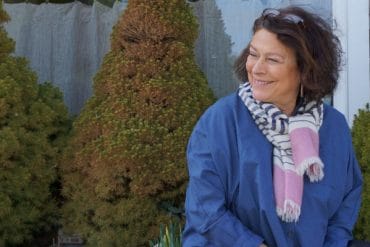Investigating the opioid crisis on Nantucket.
On the eve of summer 2015, a Nantucket police officer heard a report come in over his radio, activated the emergency lights on his cruiser and raced to Dead Horse Valley. The secluded area next to Mill Hill park is best known as a popular sledding spot for kids during the winter months, but on this day, the officer arrived to find a twenty-three-year-old man laying unresponsive on the ground. Another man stood over the body, attempting chest compressions. A construction van was parked nearby, close to the syringe officers would later find in the tall grass.
The young man, a former student athlete at Nantucket High School, was administered a dose of Narcan to halt the effects of the heroin coursing through his veins and was taken by stretcher to Nantucket Cottage Hospital only a few hundred yards away.
Just days later, police were called to a residence on Skyline Drive. They were flagged down by a young man on the street who escorted the officers into the basement of a home — his only request was that the policemen should be quiet so they wouldn’t wake his parents. In the basement they discovered a trail of blood leading to the body of a twenty-four-year-old man on the ground. Completely unresponsive, the man’s lips were blue and his eyes were left open. It took three doses of Narcan to bring him back from the brink of a heroin overdose.
Only a week passed before island police were dispatched to a home on Vestal Street for another possible overdose. Officers and EMTs entered the residence and found a man kneeling over his son, shaking him and telling him to wake up. The twenty-one-year-old man was lying naked on the floor, gasping, with white foam coming from his mouth. The EMTs administered two doses of Narcan before transporting the man to the hospital.
 The three overdoses in quick succession last June, while by no means the first instances of opioid abuse on the island, were a harbinger of things to come. Over the past year on Nantucket, these scenes have played out in private homes and public spaces with alarming regularity. During December and January, island police and EMTs responded to a string of five heroin overdoses over the span of just a month. Those events were followed by two opioid related overdose deaths on the island this year in March and May.
The three overdoses in quick succession last June, while by no means the first instances of opioid abuse on the island, were a harbinger of things to come. Over the past year on Nantucket, these scenes have played out in private homes and public spaces with alarming regularity. During December and January, island police and EMTs responded to a string of five heroin overdoses over the span of just a month. Those events were followed by two opioid related overdose deaths on the island this year in March and May.
This isn’t a story of “trouble in paradise” that so often gets written when a publication parachutes in from the mainland to expose Nantucket’s “dark secret” of heroin and opioid abuse. The island has had its own problems with drugs and alcohol, including heroin, for decades. Many islanders recall the painful chapter in the late 1990s when several well-known islanders died of heroin overdoses.
But heroin is back on the island, and some say it’s more prevalent than ever. In many respects, Nantucket is no different than any of the other small towns in Massachusetts that have been caught in the wave of opioids and heroin that has flooded the commonwealth in recent years, following the rise of powerful prescription painkillers. Governor Charlie Baker has duly recognized the problem as an outright epidemic, and the thirty miles of water between Nantucket and the mainland was never going to keep it at bay.
“Just when you think it’s starting to get bad, it gets worse when it comes to opioids,” Nantucket police chief Bill Pittman said. “It really is a hole we’ve gotten ourselves into that is going to be very difficult and expensive and tragic to recover from.”
 Three years ago Dr. Tim Lepore called the level of heroin use on Nantucket “crazy.” In the intervening period, opioid abuse and overdoses on the island have only escalated. “It’s still extremely prevalent,” Dr. Lepore said of heroin on the island. “There is an ongoing problem, and it hasn’t abated. We are seeing a larger, younger population that is using heroin.” Dr. Lepore acknowledged that Nantucket is experiencing many of the same challenges of addiction, and certainly the same heartbreak as other communities in Massachusetts, when it comes to the opioid epidemic. Except that here, he said, the intimacy of Nantucket in some ways can magnify the crisis.
Three years ago Dr. Tim Lepore called the level of heroin use on Nantucket “crazy.” In the intervening period, opioid abuse and overdoses on the island have only escalated. “It’s still extremely prevalent,” Dr. Lepore said of heroin on the island. “There is an ongoing problem, and it hasn’t abated. We are seeing a larger, younger population that is using heroin.” Dr. Lepore acknowledged that Nantucket is experiencing many of the same challenges of addiction, and certainly the same heartbreak as other communities in Massachusetts, when it comes to the opioid epidemic. Except that here, he said, the intimacy of Nantucket in some ways can magnify the crisis.
“The difference is we know everybody,” he said. “We’ve seen these kids graduate from Wee Whalers. We’ve seen them in elementary school; we’ve seen them in middle school; we’ve cheered for them in high school; we’re seeing them off to college at graduation. That’s the difference. There is this closeness that I think heightens, in my mind, the tragedy around this.” Lepore operates a bi-weekly clinic out of his primary care practice for recovering addicts that offers medication-assisted treatment, including Suboxone and Vivitrol, two FDA-approved drugs used to treat opioid dependence. At any given time, he has thirty to forty people seeking these services, which are only truly effective, he says, when combined with therapeutic treatment and counseling.
“Suboxone is really harm reduction,” Lepore said. “It gives people a chance to get out of their frenetic, illegal behavior and being exposed to people doing stupid things. You get a chance to think, to go to NA or AA, get counseling and work through it.”
 Just across the street at Family & Children’s Services of Nantucket, which provides mental health and therapeutic addiction services, executive director Tess Pearson reported that her agency has nearly fifty people currently in treatment for substance use disorders and mental health issues, which often go hand-in-hand, she said. Pearson has seen opioid abuse in island residents as young as Cyrus Peirce Middle School students.
Just across the street at Family & Children’s Services of Nantucket, which provides mental health and therapeutic addiction services, executive director Tess Pearson reported that her agency has nearly fifty people currently in treatment for substance use disorders and mental health issues, which often go hand-in-hand, she said. Pearson has seen opioid abuse in island residents as young as Cyrus Peirce Middle School students.
“I feel like we’re on a train going ninety miles per hour into a wall,” said Pearson. “The problem is growing. And there’s definitely a lack of services for any community to have integrated care. We don’t have a residential house, we don’t have any detox, and we don’t have any step-down [unit]. Everyone is working frantically, but that doesn’t stop the fact that we’re losing people falling through the cracks.”
On a Tuesday afternoon in late June, I met an island resident we’ll call Christine at the little pocket park at the corner of Main and Fair streets. A mutual friend had put us in touch when she heard I was writing about the island’s opioid problem, and the woman agreed to chat as long as she could remain anonymous. It was a beautiful day, and the sounds of early summer on Nantucket surrounded us, but there was pain in her eyes. Christine’s daughter, a graduate of Nantucket High School, had become an addict.
A beautiful, “sweet” girl from a good family with the opportunity to go to college had instead fallen in with the wrong people. At first, Christine was oblivious to what was happening to her daughter. Sure, there was some worrisome behavior and she wasn’t a fan of her new friends, but at least initially, she was unaware her daughter was becoming an addict, moving from pills to using heroin.
It began a tortured stretch of years of drug abuse, stints in rehab and treatment facilities, relapse and the strained family relationships that come with all of that. “The scariest part of everything, as a mother, is thinking about getting that phone call in the middle of the night. Every time the phone rings…” Christine said, trailing off.
Christine’s family spent the bulk of their savings getting her daughter help for her addiction, but paid a bigger price in the physical and emotional costs that are not measurable. Her daughter is back on the island now, trying to stay clean and rebuild her life. “I think the thing that makes me the saddest is that she can’t get that time back, but also, she’s so young and she’s been through so much,” Christine said. “Some of the stuff, I just, you know it breaks my heart that she knows as much as she knows. As a parent, it’s your number one job to protect your children, and that’s really hard. Maybe I didn’t do a good enough job of protecting her.”
The family dynamics of addiction and the toll it takes on the relationships among parents and children or between siblings can often be overlooked in the scramble to simply find the appropriate treatment for the addict. “It can be an incredibly isolating and dark time for families,” said Margaretta Andrews, the executive director of the Community Foundation for Nantucket. “There needs to be support for families, because it’s not just the addict. You need to start making sure you’re OK, or you can’t care for them. With mental health and substance abuse, people don’t talk about it with the same voice that they do with someone who has cancer. People aren’t bringing you casseroles.”
The Community Foundation for Nantucket has been working to shine a spotlight on the opioid issue over the past year, channeling resources to support advocacy, education and training efforts.
“The first part of that is changing the culture on the island in a very visceral way that it shouldn’t be a dirty secret,” Andrews said. “It’s happening to our kids every single day. We need to be out there in supportive ways as a community in every sense, so if the worst happens, there’s support and a recognition and help. We can’t throw enough at this.”
 In the mid-island headquarters of a Nantucket construction company, I met two recovering opioid addicts who found success staying clean through Narcotics Anonymous. The men are in their forties and fifties, a generation ahead of the current wave of opioid abusers on the island. It’s true, they said, that heroin and pills are more widely available on Nantucket today compared to when they were using. But what also is different, they believe, is that there is a better understanding of addiction for what it truly is: a brain disease, not necessarily some moral failing on the part of the user.
In the mid-island headquarters of a Nantucket construction company, I met two recovering opioid addicts who found success staying clean through Narcotics Anonymous. The men are in their forties and fifties, a generation ahead of the current wave of opioid abusers on the island. It’s true, they said, that heroin and pills are more widely available on Nantucket today compared to when they were using. But what also is different, they believe, is that there is a better understanding of addiction for what it truly is: a brain disease, not necessarily some moral failing on the part of the user.
“This disease convinces you that you don’t have a disease,” one of the men, a former heroin addict, told me. “I surrounded myself with people who were worse off than me so I could think I’m not as bad as them. My inability to get clean at an earlier time was about growing up here. I couldn’t part with friends I’d had for thirty years. But today it’s not frowned on to be in recovery. It used to be frowned on. But in general, most people look at recovery as a positive thing today, whereas twenty-five years ago it was not.”
Yet what worked for them to get clean in Narcotics Anonymous — a communal sense of purpose and solidarity with other recovering addicts — has not really resonated with the young people on the island dealing with opioid addiction. The group’s meetings have been poorly attended as of late, they said, despite the greater number of opioid abusers on Nantucket.
“They come in all the time but they don’t stay,” said the other man, who had been addicted to Oxycontin for years. “It’s very difficult to stay. With my addiction, my using was controlling my life. I didn’t care about anything except for using and I was very good at hiding it. I was all alone and I hated my life. Finally I hit my bottom and luckily I knew some people who were in NA and someone said get your ass to a meeting. And I did, and without a doubt it saved my life.”
 The rise of opioid abuse is often traced back to the well-intentioned effort by hospitals and physicians to better manage pain in their patients. The Joint Commission, the independent organization that accredits hospitals, established standards for pain assessment and treatment in 2001, which resulted in the widespread use of pain rating scales and the concept of pain as the so-called “fifth vital sign.” With Medicare reimbursements tied to patient satisfaction scores, which included pain management, the use of prescription opioids soared. “You had the Commission saying pain is the fifth vital sign, and so you would be gigged if you didn’t address pain,” Dr. Lepore said. “So there was this unholy confusion all the sudden. Treating pain became a priority and opiates were not thought of as a problem. Soon, you’ve got pill mills in Florida.”
The rise of opioid abuse is often traced back to the well-intentioned effort by hospitals and physicians to better manage pain in their patients. The Joint Commission, the independent organization that accredits hospitals, established standards for pain assessment and treatment in 2001, which resulted in the widespread use of pain rating scales and the concept of pain as the so-called “fifth vital sign.” With Medicare reimbursements tied to patient satisfaction scores, which included pain management, the use of prescription opioids soared. “You had the Commission saying pain is the fifth vital sign, and so you would be gigged if you didn’t address pain,” Dr. Lepore said. “So there was this unholy confusion all the sudden. Treating pain became a priority and opiates were not thought of as a problem. Soon, you’ve got pill mills in Florida.”
And so the expectations of patients also changed. In the Nantucket Cottage Hospital Emergency Department, it was a shift that nurse manager Martha Lake-Greenfield has witnessed first-hand over the last fifteen years. “Patients and our population started to expect zero pain,” she said. “So that’s not realistic to say that you will have zero pain through- out your entire life or throughout every incident, whether it’s an earache or a broken leg. Yet we set that bar for the public, and that was the culture.” This flawed system of incentives for managing patient pain and unrealistic expectations weren’t the only factors in the rise of prescription painkillers, but they certainly fueled the explosion of opioid abuse and addiction over the past decade. It also meant that heroin became a cheaper, and more easily accessible alternative to the prescription drugs.
“The availability of opiate prescription medications has opened that door, more so than ever before,” said Nantucket Cottage Hospital social services manager Peter MacKay. After more than thirty years as a social worker on the island, MacKay has helped countless Nantucketers access treatment and services for addiction both locally and on the mainland. “It’s your neighbors, it’s your family members, it isn’t just your bowery bums,” MacKay said. “And sometimes people are going into it for all the right reasons, because they have chronic pain, and the next thing you know you’re addicted. These are extremely addictive medications, so I try and not look at it so much with blame.”
While the drumbeat of overdoses and addiction on Nantucket and across Massachusetts has continued seemingly unabated in 2016, there has indeed been a new focus on the epidemic at the local level and statewide that is bringing greater awareness and more resources to bear on an intractable problem. In March, Governor Charlie Baker signed a landmark opioid bill into law that strengthened prescribing laws and increased efforts to educate doctors and medical students. Specifically, the bill limited opioid prescriptions to a seven-day supply for first-time adult prescriptions and a seven-day limit on all opiate prescriptions for minors (with some exceptions).
At the island level, the Nantucket Behavioral Health Task, a coalition of island health and social service agencies, as well as private practitioners, clinicians and advocates, is focusing on expanding services, as well as opportunities for training, education and advocacy. After securing a major grant from the Tower Foundation in 2015, the Task Force recently provided the startup funding for the group physician practice at Nantucket Cottage Hospital to hire psychiatric nurse practitioner Hannah Severns, who arrived in May. With an extensive background in the assessment and treatment of mental health issues and substance use disorders, Severns will be embedded in the island’s primary care practices to catch behavioral health patients before they reach a crisis point.
 The Task Force has also engaged psychiatric nurse practitioner Janina Kean, a nationally recognized speaker and former president and CEO of High Watch Recovery Center in Connecticut. Kean has held a series of family awareness workshops focusing on the impact of addiction and will continue to work with the Task Force in a consulting role moving forward. There have also been talks about a potential merger between the now defunct nonprofit agency Access Nantucket and Gosnold on Cape Cod, the leading addiction treatment organization in the region.
The Task Force has also engaged psychiatric nurse practitioner Janina Kean, a nationally recognized speaker and former president and CEO of High Watch Recovery Center in Connecticut. Kean has held a series of family awareness workshops focusing on the impact of addiction and will continue to work with the Task Force in a consulting role moving forward. There have also been talks about a potential merger between the now defunct nonprofit agency Access Nantucket and Gosnold on Cape Cod, the leading addiction treatment organization in the region.
“I see an awareness now that I think is going to ultimately turn the tide,” said Lake-Greenfield. “I hope it turns the tide in a way that patients aren’t using these street drugs. I do think we’ve reached a point where we’re really working hard to come up with alterative ways to help patients manage their pain. For our clinicians, the new guidelines have really helped them to think outside the box.”
That sense of optimism is hopefully warranted considering the increased awareness of the opioid epidemic and the new resources being brought to bear on the problem. But for the men and women on the frontlines — the island’s police officers, first responders and emergency department staff—the crisis continues to unfold.
“Now we’re dealing with the challenges of administering Naloxone,” police chief Pittman said. “Narcan is a good tool to keep people alive, but we’ve got cases where people have used Narcan to increase their ability [to take drugs], as they’ve got someone standing by to give them Narcan if they cross the line. That tool to save their life is also being used to put their life at extreme risk.” The addicts who overdose and lose their high after being ad- ministered Narcan often leave the emergency department as soon as they can to get back on the street and get high again.
“It’s very frustrating and it puts us in a very difficult position,” said Nantucket firefighter/ EMT Jeff Allen, a sixteen-year veteran of the department. “It doesn’t matter if you have $10 in your pocket or $10 million; it’s affecting everyone. And it feels like a situation where we’re just putting a Band-Aid on it. So what comes next?”






